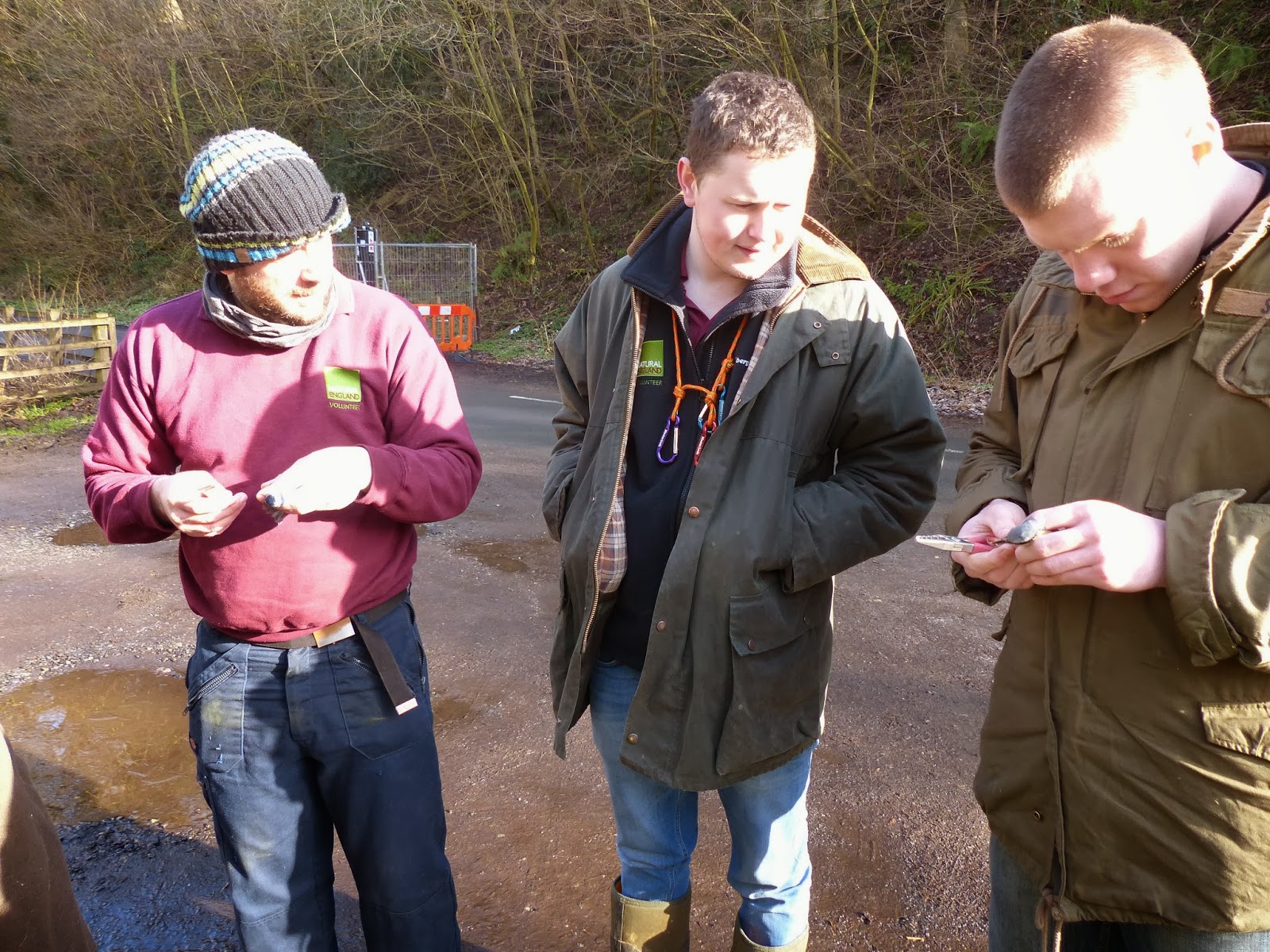With areas of the valley restricted slightly at the moment due to the flooding it has allowed the team here to get across to Forge Valley, to try and make a dent in the woodland management works that need to be carried out on the site. Along with the
Lower Derwent Valley NNR and Skipwith Common NNR, both Forge Valley Woods NNR and Duncombe Park NNR come under our 'bracket' – and so we have to try and split time accordingly between all the sites.
Forge Valley Woods NNR covers 63.63 hectares of some of the
best valley side mixed deciduous woodland in North Yorkshire. The valley was initially cut
as melt water drained from ice sheets over the North York Moors producing the
steep sided gorge. As a result of the underlying geology the woodland
grades from acidic higher slopes with Pedunculate Oak woodland, to a more basic
middle slope dominated by Ash and Elm through to a neutral valley floor with Alder
and Willow woodland.
The site was first scheduled as a SSSI (Site of Special Scientific Interest) in 1954 and was
declared an NNR on the 8th March 1977 in an ongoing agreement with
the site owners, Scarborough Borough Council. Work over that time has been
aimed at improving the woodland composition and structure, increasing the
population of many of its notable plants and invertebrate communities and
improving public access and enjoyment of the site.
Several work days at Forge over the next few weeks will allow us to
carry out a variety of tasks aimed at continuing this work. We shall start by thinning
some of the dense stands of Sycamore,
these trees initially colonised the site during the first half of the last century. Whilst
Sycamore does have a value to wildlife and is gaining a status as a natural
feature in our woodlands, the species does tend to form a monoculture by
casting a deep shade under which its own saplings are the most likely to
thrive, reducing other tree regeneration and a decrease in ground flora
diversity. Beech was also planted into the area in the 1960’s and unlike
Sycamore was not a natural coloniser, being beyond its natural range in the
UK. Beech also casts a deep shade reducing other flora and so we will also be thinning
out some of the beech in some areas. This will hopefully help in increasing the
natural regeneration of the native tree species across the valleys slope and
help some of the plant specialities of the site to thrive.


The site is well known for its colonies of Green Hellebore,
Herb Paris, Lily-of-the-valley, Bird's-nest Orchid and Baneberry which have
either restricted distributions in the county or are found at the northern edge
of their range. Other woodland species such as Toothwort, Columbine, Thin-spiked
Wood-rush and Broad-leaved Helleborine also occur, whilst small pockets of
Limestone Grassland provide habitats for Quaking Grass,
Cowslips, Salad Burnet, Meadow Saxifrage and Thyme, as well as the food plant
for the Brown Argus butterfly, Rockrose.
We will be strimming some of these grasslands to improve the
site for these flowering species, reducing competition by the ranker more competitive
grasses and encroachment by brambles and scrub. We’ll also be carrying on with a
programme to reinstate Hazel coppicing to help extend the life of the Hazel
stools found throughout the site and again increase the light reaching the
woodland floor to allow some of the plants mentioned above to flourish.
Likewise we will be taking out other non-native and very competitive species
such as Rhododendron and Snowberry.
Whilst present at Forge we took the opportunity to ring at the feeding station over
lunchtime. The feeding station at the aptly named ‘birdwatchers car park’ is a
popular location for the public to enjoy close encounters with many woodland
birds, and many birdwatchers and photographers visit daily to encounter the more
unusual species up close such as Nuthatch which visit the tables regularly for peanuts. A single 30 foot net kept us busy and produced a total of 71
birds in just over an hour.
Nuthatch
This complements a joint project between Natural England
and the East Yorkshire Ringing Group a couple of miles away in Raincliffe Woods
where a further 200 birds have been caught and ringed this winter. Highlights this
winter have included 6 Nuthatch, 7 Marsh Tit (a species which is still doing
well here despite national declines), 3 Great Spotted Woodpeckers and 5 Brambling
amongst the usual common tits and finches – largely Chaffinch. This is
producing a good sample of woodland birds which are of conservation concern at
the moment.
Signs of spring are starting to show in Forge now which include:
Snowdrops, Dog’s Mercury, Early Dog Violet, Woodruff and Lords and Ladies - all
out but not yet flowering. Also Green Hellebore which was just starting to bud and
will be flowering soon as it’s typically an early woodland species.
Green Hellebore
A variety of fungi was on display today, including a new one
that we haven’t come across in the Lower Derwent Valley - Scarlet Elf Cup (below) - a
very vibrant red cup that stood out like a beacon amongst the variety of green mosses which cover
the woodland floor. Scarlet Elf Cup is a disc fungus which can be seen throughout winter and early spring, often growing on dead wood of deciduous trees, usually surrounded by moss.
Also today we came across Jelly
Ear, Yellow Brain, Velvet Shank, Dead Moll's Fingers (2) and Stump Puffball (3).
Scarlet Elf Cup
Dead Moll's Fingers
Woodpeckers were drumming throughout the day and a single Woodcock
was flushed during our work. We’ll be looking forward to carrying on with our
work here over the next few weeks before we cease our woodland management work
for another winter as the bird breeding season approaches. It will be
interesting to follow the woodland plants as they appear as the months progress.












No comments:
Post a Comment